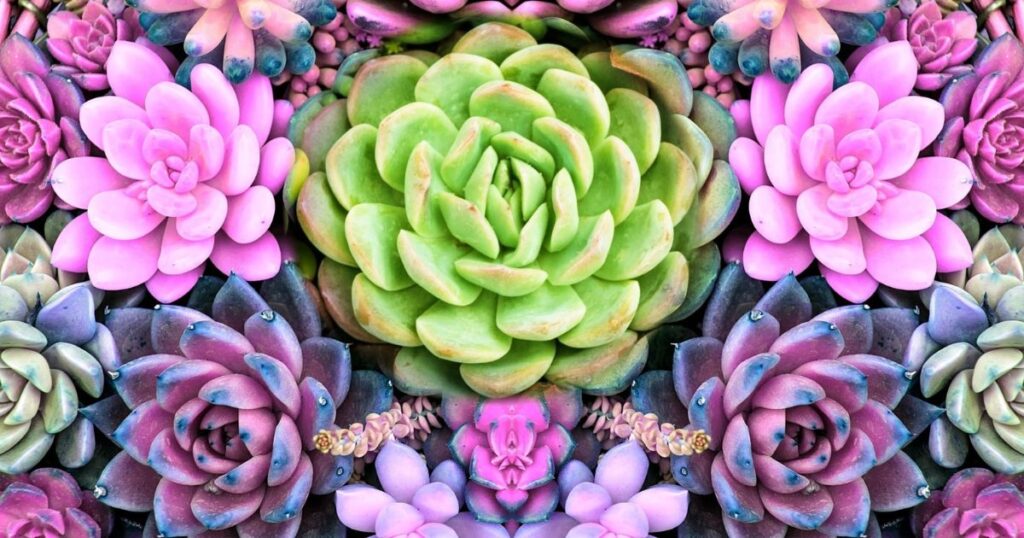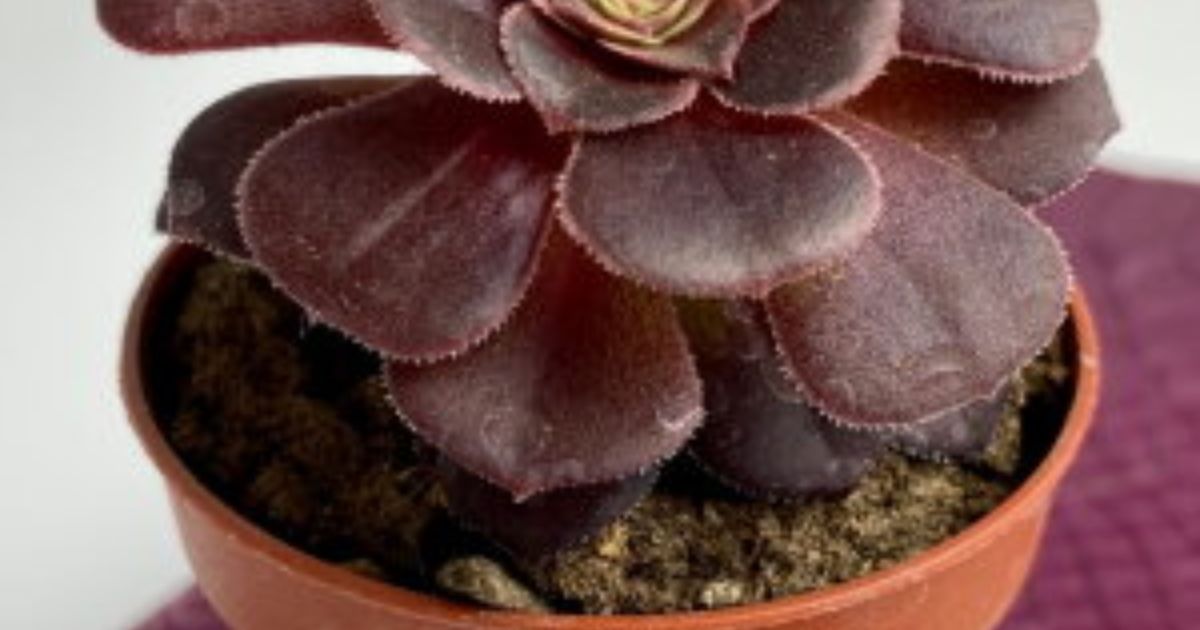A succulent is a type of plant known for its thick, fleshy leaves and ability to store water. While most succulents thrive in well-draining soil, some can be propagated in water. However, not all succulents can sustain long-term growth in water, as they may rot if overexposed. It’s essential to choose the right succulent species and monitor water levels for successful water propagation.
Discover the fascinating world of succulents and unlock the secrets of their growth. Ever wondered, Can a succulent grow in water? Uncover the answer as we delve into the unique and surprising journey of succulents in aquatic environments. Join us on a journey of exploration and find out how you can nurture these resilient plants in a whole new way.
A succulent, typically thriving in well-draining soil, can, in some cases, be propagated in water. Not all succulents can sustain long-term growth in water, as overexposure may lead to rotting. The key lies in selecting the right succulent species and carefully monitoring water levels for successful propagation.
Why Grow Succulents In Water?
Why do succulents turn red Growing succulents in water offers a unique and visually appealing alternative to traditional soil-based cultivation. For starters, water propagation can be an efficient and cost-effective way to expand your succulent collection. It also allows for easy observation of root development, making it an excellent educational experience for plant enthusiasts.
Additionally, growing succulents in water can be an attractive and space-saving option for indoor settings. Water vessels with propagated succulents can serve as eye-catching decor, adding a touch of greenery to your home without the need for extensive gardening space. With minimal maintenance and a bit of creativity, cultivating succulents in water becomes a delightful and accessible hobby for plant lovers of all levels.
What Types Of Succulents Grow In Water?

Discovering which types of succulents thrive in water is an intriguing exploration for plant enthusiasts. Certain species, like the Devil’s Backbone (Kalanchoe daigremontiana) and Snake Plant (Sansevieria), are known to flourish when propagated in water. Their hardy nature makes them perfect candidates for those looking to enjoy the unique experience of growing succulents in an aquatic environment.
While some succulents, such as Echeveria and Aloe Vera, prefer well-draining soil, others like the aforementioned Devil’s Backbone and Snake Plant adapt surprisingly well to water propagation. This opens up a fascinating avenue for plant lovers to experiment with alternative growing methods.
How to Grow Succulents in Water?
Growing succulents in water is a simple and rewarding process. Begin by selecting healthy succulent cuttings, ensuring they are free from any signs of disease or damage. Place the cuttings in a container with enough water to cover the bottom half of the stem, making sure not to submerge the entire cutting.
Change the water every few days to prevent stagnation and discourage the growth of harmful bacteria. Over time, you’ll notice roots developing, indicating successful propagation. Once the roots are well-established, transfer the succulent to well-draining soil for continued growth, providing a unique and easy way to expand your succulent collection.
| Key Points | Description |
| Succulent Water Propagation | Some succulents can be propagated in water, offering an alternative to traditional soil-based growth. |
| Species Selection | Choosing the right succulent species is crucial for successful water propagation, as not all varieties thrive in water. |
| Monitoring Water Levels | Careful monitoring of water levels is essential to prevent overexposure, which can lead to issues like root rot. |
| Soil vs. Water Growth | While well-draining soil remains a standard medium, exploring water propagation adds a unique dimension to succulent care. |
| Balancing Adaptability | Recognizing the balance between water and soil provides insights into the adaptability of succulents in various environments. |
How long can Succulents Live in water?
Succulents can survive in water for a limited period, usually during the propagation stage. When attempting to root succulents in water, it’s essential to keep them submerged for about two to four weeks, allowing roots to develop. Leaving succulents in water for an extended time can lead to problems, as they are prone to rot in consistently wet conditions.
While water can kickstart the growth of succulent roots, it’s crucial to transfer them to well-draining soil after the initial phase. Succulents are adapted to arid environments and thrive when provided with the proper balance of moisture. Long-term survival in water is not suitable for most succulents, so transitioning them to soil ensures a healthier and more sustainable life for these resilient plants.
How To Care For Succulents When We Grow Them In Water?
When cultivating succulents in water, it’s crucial to start with a healthy cutting, ensuring it has calloused before placing it in water. Select a clear glass or jar to allow sunlight penetration and change the water regularly to prevent stagnation. Keep the succulent in indirect sunlight, avoiding overexposure to prevent potential issues like rotting. Patience is key as the succulent develops roots in water, signaling readiness for transplantation.
To care for water-grown succulents, transplant them into well-draining soil once roots are established. Use a suitable succulent or cactus mix, and water sparingly, allowing the soil to dry between watering to mimic their natural habitat. Position the potted succulent in a sunny spot, and be mindful of temperature conditions. With this simple care routine, your water-propagated succulents can thrive and become charming additions to your indoor or outdoor space.
Succulent Propagation in Water
Succulent propagation in water is an exciting method that allows you to grow new plants from cuttings. Simply snip a healthy succulent leaf or stem, let it dry for a day or two to form a callus, and then place it in a container with water. Witness the magic as roots start to develop, eventually giving rise to a brand-new succulent plant.
While water propagation works well for some succulent varieties, it’s essential to note that not all succulents thrive in water indefinitely. Prolonged exposure to water can lead to root rot, so it’s crucial to transition the rooted cuttings to well-draining soil once they’ve developed a robust root system. Experiment with different succulent types, and enjoy the rewarding journey of watching your succulent cuttings transform into flourishing plants.
How often should I water my succulents?
Determining how often to water your succulents depends on factors like the type of succulent, the environment, and the season. In general, succulents prefer infrequent but deep watering. Allow the soil to dry out completely between watering sessions, typically every 2-4 weeks. Overwatering can lead to root rot, so it’s crucial to let the soil dry to the touch before providing a thorough soak.
Observing the signs your succulent gives is key; if the leaves start to appear wrinkled or wilted, it might be time for a drink. During the dormant winter months, succulents often require less frequent watering, while in the active growing season, they may need more. Adjust your watering schedule based on the unique needs of your succulent and the conditions it’s living in, striking a balance that keeps the plant healthy and vibrant.
Why does this watering method work?
The success of this watering method lies in its ability to mimic the natural environment of plants. By allowing the soil to dry out between waterings, the roots develop resilience and seek moisture, promoting a healthier and more robust root system. This approach also prevents the risk of overwatering, a common issue that can lead to root rot and other plant ailments.
Furthermore, intermittent watering encourages plants to become more drought-tolerant. When subjected to occasional dry spells, the plants adapt by developing deeper root systems, enabling them to access water stored in the soil more efficiently. This method not only supports the overall well-being of the plant but also fosters a sustainable and resource-efficient approach to gardening.
The right soil is crucial for watering success
Choosing the right soil is paramount for successful watering of plants. A well-draining soil ensures that water doesn’t accumulate around the roots, preventing issues like root rot. It allows water to permeate the soil evenly, reaching the plant’s roots and providing essential moisture without causing harm.
In contrast, poor-quality soil with inadequate drainage can lead to waterlogged conditions, suffocating the roots and depriving plants of oxygen. Whether for flowers, vegetables, or succulents, investing in the appropriate soil type is a simple yet crucial step towards fostering healthy plant growth through proper and effective watering.
FAQ’s
What type of soil is best for watering plants?
Choosing well-draining soil is crucial to prevent water accumulation and root issues.
Can any soil lead to over watering problems?
Yes, poor-quality soil lacking proper drainage can result in waterlogged conditions and harm plant roots.
Why is soil quality important for succulents?
For succulents, the right soil ensures optimal drainage, preventing rot and supporting their unique water storage needs.
Do different plants require specific soil types?
Yes, various plants thrive in specific soil types, and selecting the right one is essential for their health and growth.
How does soil quality impact overall plant health?
Quality soil with proper drainage promotes healthy root systems, enabling plants to efficiently absorb nutrients and water.
Conclusion
In conclusion, the question of whether a succulent can grow in water unveils a nuanced aspect of plant propagation. While some succulents exhibit adaptability to water propagation, it’s crucial to acknowledge the diversity within the succulent family. Not all succulents thrive in water for sustained periods, and overexposure may lead to detrimental consequences such as rotting. Selecting the right succulent species is therefore pivotal, as it determines the success of water propagation endeavors.
Understanding the delicate balance between soil and water is essential in nurturing healthy succulents. The traditional well-draining soil provides a stable foundation for most succulents, offering the necessary aeration and preventing issues like root rot. However, for those intrigued by alternative methods, experimenting with water propagation can be an exciting journey.










